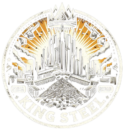Patra
Understanding PATRA Iron: Composition, Benefits, and Applications
In the vast and diverse world of construction materials, PATRA iron stands out for its unique qualities, versatility, and increasing popularity among engineers, architects, and builders. This article delves into the intricacies of PATRA iron, exploring its composition, benefits, applications, and the reasons behind its growing demand in the construction industry.
What is PATRA Iron?
PATRA iron, often referred to in the context of steel sheets or plates used in construction and manufacturing, embodies a category of iron that has been processed to achieve certain physical and chemical properties. The term “PATRA” might not be universally recognized in the same context everywhere; however, it broadly represents a type of steel sheet or plate material that is utilized in various applications due to its durability and malleability.
Composition and Manufacturing Process
The composition of PATRA iron typically involves iron alloyed with carbon, and it may include other elements such as silicon, manganese, phosphorus, and sulfur in varying amounts depending on the required properties of the end product. The manufacturing process of PATRA iron involves several key steps:
Melting and Casting: The raw materials are melted in a blast furnace or electric arc furnace. Once melted, the composition is cast into slabs or billets, depending on the final product’s required shape and size.
Rolling: The slabs or billets are then heated and passed through rolling mills to achieve the desired thickness and width. This process can be hot rolling or cold rolling, each providing different characteristics to the material.
Heat Treatment: Some types of PATRA iron undergo heat treatment processes such as annealing, quenching, and tempering to enhance their mechanical properties like strength, hardness, and ductility.
Surface Finishing: Finally, the surface of PATRA iron can be treated or coated to improve corrosion resistance, enhance aesthetic appeal, or impart additional properties such as reflectivity or electrical conductivity.
Benefits of PATRA Iron
PATRA iron offers a plethora of benefits, making it a preferred choice for various applications:
Durability and Strength: The specific composition and manufacturing processes of PATRA iron confer high strength and durability, making it suitable for structures subjected to heavy loads and harsh environmental conditions.
Versatility: Its ability to be cut, shaped, and welded allows for its use in a wide range of applications, from simple sheet metal work to complex structural components.
Corrosion Resistance: Certain types of PATRA iron are designed to resist corrosion, making them ideal for use in environments prone to moisture or chemical exposure.
Cost-Effectiveness: Compared to some other materials offering similar strength and durability, PATRA iron can be more cost-effective, especially for large-scale applications.
Applications
The applications of PATRA iron are extensive and varied, reflecting its versatility and adaptability:
Construction: In the construction industry, PATRA iron is used for structural components such as beams, columns, and trusses, as well as for roofing, cladding, and flooring materials.
Manufacturing: In manufacturing, it serves as a fundamental material for machinery, automotive parts, electrical appliances, and various tools and equipment.
Infrastructure: PATRA iron plays a crucial role in infrastructure projects, including bridges, airports, railways, and energy facilities, where strength and durability are paramount.
Art and Design: Its malleability and aesthetic qualities also make PATRA iron a popular choice for artistic and decorative purposes, including sculptures, furniture, and architectural accents.
The Growing Demand
The demand for PATRA iron continues to grow, driven by the global expansion of the construction and manufacturing sectors. Urbanization, infrastructure development, and the ongoing need for durable, cost-effective materials fuel this demand. Additionally, advances in steelmaking technologies have enabled the production of PATRA iron with enhanced properties, further broadening its applications and appeal.
Conclusion
PATRA iron represents a cornerstone of modern construction and manufacturing, offering a combination of strength, durability, versatility, and cost-effectiveness that few other materials can match. Its wide range of applications, from the foundations of skyscrapers to the intricate details of artistic installations, underscores its importance in shaping the built environment. As technology advances and the demand for sustainable, high-performance materials grows, PATRA iron will undoubtedly continue to play a pivotal role in the development of our societies.
